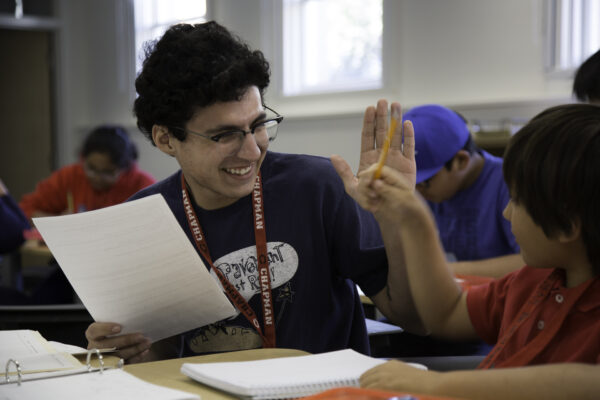What if you could create a playlist that would guarantee to get people dancing? Would it be a matter of opinion, or is there a scientific way to ascertain danceability?
Yes, and the answer is the house track “Freelance” by music artist Toro y Moi.
This insight is thanks to rising senior Marcelo De La Maza Mendizabal ’24, who is spending his summer conducting research that uses audio-analyzing digital tools to recognize the quantitative elements in house music, explore how those elements relate to popularity, and conduct a predictive analysis for future trends in the genre.
House music, also known as electronic dance music, originated in Chicago as an underground genre within Black and LGBQT communities. In recent years, it has expanded in popularity, becoming more mainstream and commercialized. Marcelo wants to know why.
The idea for the project originated this past February, when Marcelo was taking a finance class through Chapman’s Center for Global Education at City University in London. “We learned about predictive trends, which I found fascinating. I wanted to take this knowledge and relate it to my personal interest in music,” he said.
So he approached Chapman’s Center for Undergraduate Excellence (CUE), which offers an on-campus eight-week summer program that offers Chapman University undergraduate students experience in hands-on research and creative scholarship mentored by expert faculty through its Summer Undergraduate Research Fellowship (SURF) Program. The fellowship includes a $4,000 stipend for 30 hours of research work per week.
“Students who have participated in the SURF program have grown as scholars or artists through their experience. Many of them have gone on to graduate schools, using the tools and research skills they acquired during SURF,” says Julye Bidmead, CUE director and associate professor in Wilkinson College of Arts, Humanities, and Social Sciences.
Using Spotify’s Application Programming Interface (API) Marcelo identified 12 quantifiable elements house music, among them: danceability rating, energy, key signature, loudness, speechiness (vocals), accousticness, instrumentalness, liveliness, valence (mood), tempo, time signature.
Marcelo’s regression analysis has revealed that since 1985, energy, instrumentalness and song length have declined; speechiness and volume have risen (the latter he suspects is due to more sophisticated software and mastering techniques); and tempo has remained largely constant at around 125 beats per minute (BPM). (This is slightly below what Stanford University dance faculty deem the ideal BPM for a “gentle lyrical waltz,” apparently).
A public relations and advertising and business administration double major in Chapman’s Dodge College of Film and Media Arts and Argyros School for Business and Economics, respectively, Marcelo credits the transdisciplinary aspect of Chapman’s curriculum and course offerings with his ability to pursue passion projects and discover ideas outside of his majors.
“I have studied computer science, business music, and all sorts of classes outside of my major. It has helped me realize what I like doing. Chapman has such a broad scope of educational opportunities,” he said. Marcelo added that he has taken a page from the playbook of his brother, Particio De La Maza Mendizabal ’22, who also studied across disciplines, focusing on film, business and data analytics, and is now living in Hollywood developing his first feature film.
“Marcelo’s passion for music, his intellectual curiosity and his drive to apply his education to find answers to complex problems exemplified by this project are all are a testament to his promising future,” says Kaan Ataman, assistant professor in Chapman’s Argyros School of Business and Economics and faculty advisor for the research project.
After graduation, Marcelo has his sights set on the music industry. He has held several advertising internships, including one in his hometown in Sao Paulo, Brazil, and will be applying to a record label internship in the fall.
Will Marcelo put the results of his research to a live test, and see if Freelance really is the most danceable house artist? “Maybe!” he said. “That could be a good experiment.”




